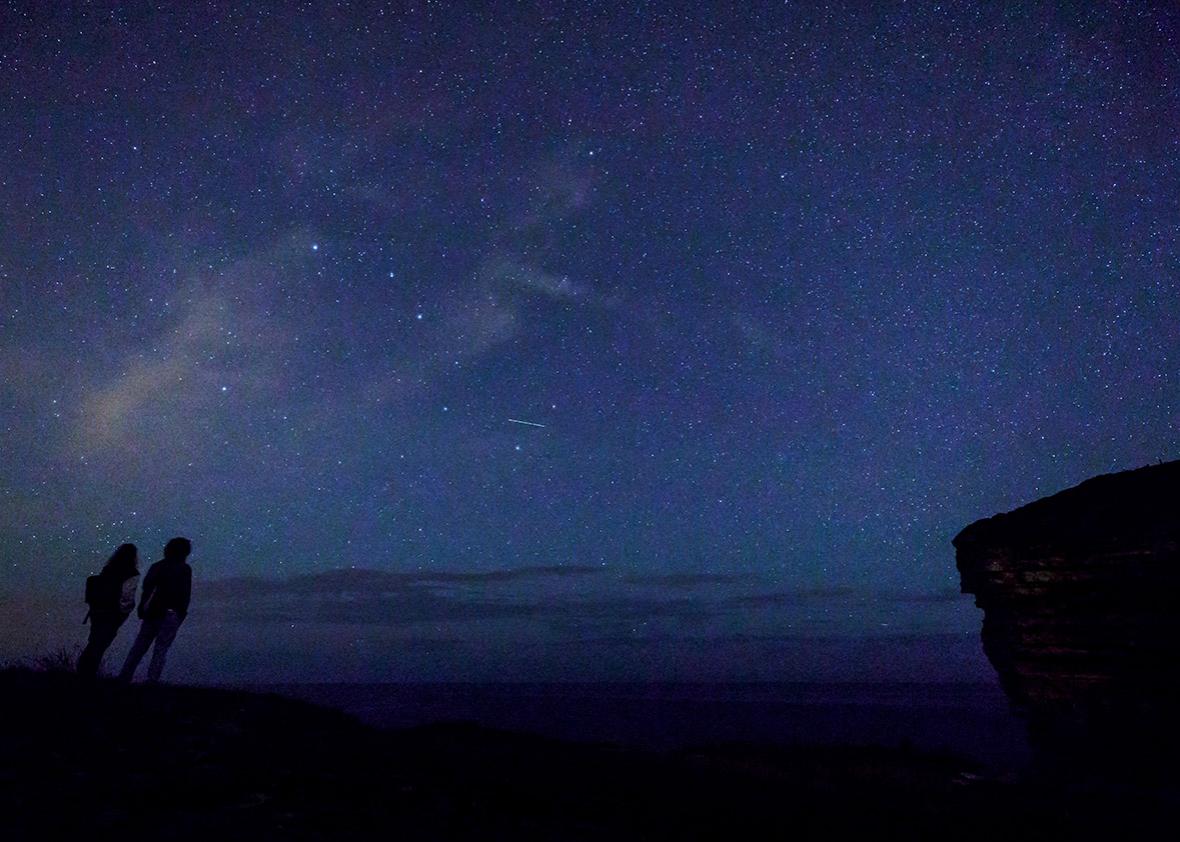If you wanted to believe, 2017 was the year to do it. Thanks to an explosion of new discoveries of potentially habitable planets outside our solar system, a better understanding of how life might evolve on other worlds, and not inconsequentially a shift in the culture, aliens are no longer regarded as just another realm of paranormal craziness. We now have a modern-day NASA that is explicitly directed to look for life, billionaires pouring money into the search for extraterrestrial intelligence, and a Department of Defense that admits it was studying UFO sightings for some time.
Sandwiched between the 10th and 11th seasons of The X-Files, 2017 felt like the year aliens finally, actually, for real this time went mainstream. Nearly 61 percent of the world’s population believes alien life exists somewhere in the universe. That’s little surprise when you think about how much happened this year.
For starters, NASA scientists began the year with the announced discovery of seven potentially habitable exoplanets in the TRAPPIST-1 star system, 40 light-years away. It’s going to take more some powerful instruments to really determine whether any of those planets possess the essentials for life (liquid water, an atmosphere that keeps things warm and fuzzy, a star that isn’t spewing out violent radiation in every direction), and the system is way too far for anyone to even dream about sending a spacecraft there before we’re all dead and gone. But the system’s discovery is a critical sign that potentially habitable worlds are probably much more common—and closer—than we had ever imagined.
Let’s not forget some of the other exoplanets that stoked our hopes of finding extraterrestrial neighbors. Ross 128 b, 11 light-years away, is probably our best chance at finding living aliens thanks to its quiet host star (the detection of strange radio signals fed hopes that an alien civilization was living nearby). GJ 237 b, a little over 12 light-years away, is a “super-Earth” that could support life as well (SETI scientists actually beamed a musical message over to the system to make contact with any intelligent lifeforms in the neighborhood). And 39 light-years away, astronomers found evidence that an Earth-sized bugger called GJ 1132 b had an atmosphere to potentially allow life on the surface to thrive.
Within our own solar system, NASA found new hopes that aliens might actually just be a quick hop away, living on worlds like Jupiter’s moon Europa or Saturn’s moon Enceladus. These rocks possess underground liquid oceans that could be the perfect mixing pots for the evolution of extraterrestrial life. The knowledge that even Earthbound life can withstand extreme environments is spurring the potential greenlight for missions to Saturn’s moon Titan or to a nearby comet to look for life or the ingredients for life—part of what looks like the agency’s new emphasis of astrobiology missions.
Could we one day find lifeforms that are as smart or smarter than our own species? There’s no shortage of sharp minds pondering the question. New theories are being pitched that maybe the aliens aren’t actually all dead—they’re just in a deep sleep. Maybe it’s actually better off this way? Movies like Alien: Covenant and Life were good reminders that not all lifeforms are peaceful. Maybe we should just count our blessings and stay quiet until we figure out how we might be able to defend ourselves from a hostile alien invasion.
There’s little chance of that actually happening. A strange interstellar asteroid decided to stop by the solar system for a visit, and one of the first things scientists decided to do was see whether it was actually an alien ship. It wasn’t, of course, but it just goes to show you that even the most implausible explanation wouldn’t go uninvestigated in 2017. In the future, however, we’ll probably just let the intelligent machines handle the hard work.
But all of these developments were at least grounded in the processes and logic that define scientific research. There was another facet to this year’s obsession with aliens that hewed closer to what most of us have heard before: UFOs and government involvement. Hacking collective Anonymous got things heated in the middle of the summer when it claimed NASA was about to reveal the existence of aliens. That didn’t happen—perhaps because the agency decided it to hold off on such a bombshell announcement, or almost definitely because it has never found evidence of aliens.
OK, so a bunch of hackers turned out to be wrong about aliens. That’s nothing special. What is special, however, is the New York Times publishing a piece detailing the government’s five-year, $22 million program to investigate UFOs. It’s been a few weeks, and the media is still trying to make sense of it all. Only in 2017 could the craziest news of the year not be that the Pentagon actually admitted that such a program once existed.
(Also, I still can’t believe Tom DeLonge was onto something real.)
And less than a week after the New York Times piece was published, SpaceX’s final launch of the year turned Southern California’s skies into an eerie scene out of an alien-invasion movie. It wasn’t a UFO, of course, but the timing couldn’t have been better.
If 2017 was a banner year for talking about aliens and UFOs with earnestness and enthusiasm, 2018 seems poised to take all of those conversations to new heights. The rapid advancement of new technology and the circulation of new data—combined with increasingly favorable odds that something is out there—means that as time passes, our search for cosmic companionship will only get more intense.
